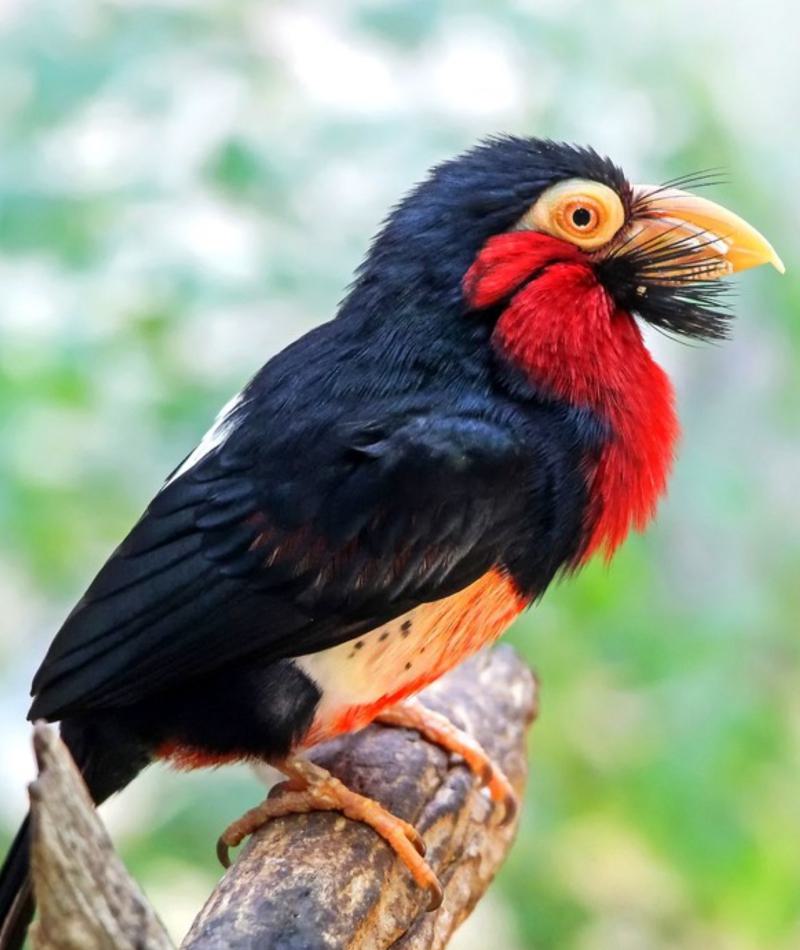
Bearded Barbet
Pogonornis dubius
Did you know?
- Bearded barbets are a part of the Lybiidae family, which they share with other African barbets.
- They are named for their “beard” of black feathers.
- They live in forests in tropical West Africa.
- They love to eat figs (and many other fruits).
- They are important for seed dispersal.
African Barbets
Bearded barbets are one of 41 species of African barbets. Many barbet species grow to be about eight or nine inches long and weigh only a few ounces. They are opportunistic omnivores and mostly eat insects and fruit. They are related to toucans and woodpeckers.
Adaptations
Bearded barbets have an adaptation on their beak which almost acts like teeth. The saw-like edges on their beaks help them cut through tough fruit. They also help in boring holes in rotted trees, which the birds do to create nests and to roost. Additionally, the bearded barbets toe arrangement is ideal for climbing trees.
Threat Level
- Unknown
- Common
- Near Threatened
- Threatened
- Endangered
- Critically Endangered
- Extinct in the Wild
Common
The Bearded Barbet is widespread and abundant.
Range
Tropical west Africa
Habitat
Open forests

We care about Bearded Barbets
We support bearded barbets in the Bird House at the Zoo. Learn more about how we are helping wildlife around the world.
Find this animal in Historic Hill

SAINT LOUIS ZOO ZONE
Historic Hill
Historic Hill is a lovely stroll through one of the oldest parts of the Saint Louis Zoo. From the 1904 World’s Fair Flight Cage to the Spanish architectural flavor of the 1920s in the Bird House, Primate House and Herpetarium to the finishing touches of our thoroughly modern exhibits, this area of the Zoo has a unique ambiance and a nostalgic history that make it a great destination.

